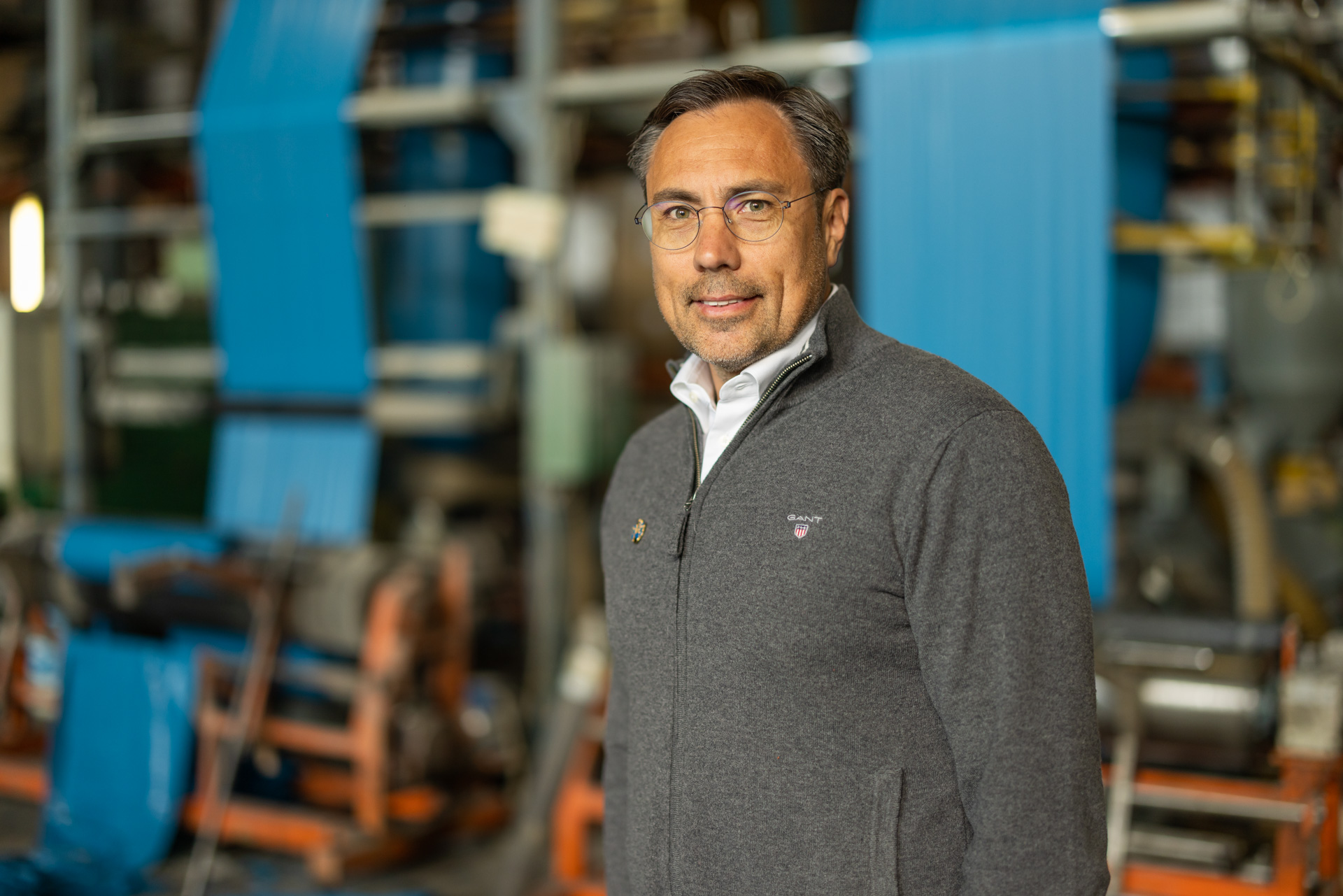How Does Plastic Waste Become a New Product? Plasta CEO Danas Poderis Explains
Although discarded plastic packaging could be turned into new products, only about 56% of plastic waste in Lithuania is actually recycled. Danas Poderis, CEO of Plasta, a polyethylene waste recycling and plastic production company, discusses the current state of waste sorting in Lithuania and answers some of the most frequently asked questions about recycling.
If Waste Is Sorted Into Different Containers, Why Does One Truck Collect It in Lithuania?
Recycling stations with differently colored containers have been installed in Lithuania since 2007, yet people still have questions about the sorting process. One common question is why waste is thrown into separate containers but then seemingly collected in the same truck.
“This observation is true,” confirms Poderis. “However, what is not visible from the outside is that these trucks have separate compartments inside. So, while the waste from different containers is thrown into the same truck, it ends up in dedicated sections within it.”
Does Everything Thrown Into Recycling Containers Actually Get Recycled?
Not all plastic is the same. Packaging often has symbols indicating different types of plastic, such as polyethylene, polystyrene, or polyamide. While all plastic should be placed in the designated recycling bin, not all of it can be processed by the same recycler. This is why sorting is a lengthy process, and the recycling container is just the first step. The next stage is sorting centers, where waste is further separated by type, contamination level, quality, and color.
“Plasta receives already sorted polyethylene waste. However, impurities are still present, so the waste goes through an advanced optical sorting division, where it is inspected and separated automatically. The recyclable waste is then washed in a special cleaning line. After washing, the plastic is melted and filtered, producing plastic granules. These granules serve as raw material for new products,” explains the Plasta CEO.
Should I Wash My Plastic Packaging Before Disposal?
This is a frequently asked question, as various sources provide different answers. Some say packaging must be thoroughly cleaned, others recommend rinsing, and some claim it is unnecessary. Poderis explains that washing waste is a crucial step in recycling, and it should start at home.
“Only clean waste can become valuable raw material, which is why we wash all plastic waste during the recycling process. However, it is much easier to rinse packaging at home while food residues are still fresh than to deal with uncleaned waste that has started to emit unpleasant odors. Cleaning packaging at home has a dual benefit: it helps save electricity and water used in the recycling process and reduces unpleasant odors for those working at recycling facilities,” says Poderis.
Dealing with unclean plastic waste means tackling unpleasant odors. “We are committed to minimizing odor emissions and ensuring they remain within permissible limits. Although plastic recycling inevitably produces some smell, we use advanced odor neutralization systems to keep it to a minimum. Our modern equipment, including odor-neutralizing spray systems, helps bind and eliminate odors, protecting surrounding areas from unpleasant effects,” says Poderis.
These odor absorption systems spray microscopic water droplets with plant-based, environmentally and human-friendly substances that effectively capture and neutralize odors. The sprays are precisely controlled to minimize their spread beyond the facility’s boundaries.
In Lithuania, odor concentration in residential areas is regulated by the Ministry of Health, setting threshold limits. “From January 1, 2026, a stricter limit of 5 OUe/m3 will be implemented. However, Plasta already meets these standards, even though we operate in an industrial zone where such strict requirements are not mandatory,” says Poderis.
Are Recycled Plastic Products Made from My Discarded Plastic?
When shopping, you may notice packaging labeled as made from recycled plastic. However, these are usually produced from industrial waste, which is cleaner and easier to recycle. This means the plastic comes from industrial waste—factories, businesses, and the construction sector rather than household waste.
If you want to contribute to circular economy development, resource conservation, and climate protection, consciously choose products made specifically from post-consumer recycled plastic—the kind you dispose of. Look for packaging labels with RAL certification, which indicate the percentage of post-consumer plastic used in the product.
What Can My Sorted Waste Become?
At Plasta, recycled plastic is used to manufacture garbage bags, household trash bags, protective films, and construction films. Lithuanian household plastic waste is transformed into “Trash Panda” garbage bags, which are made from 100% recycled waste, with at least 40% coming from household plastic waste. This represents true circularity—plastic from homes is turned into trash bags, which are useful once again in households.
